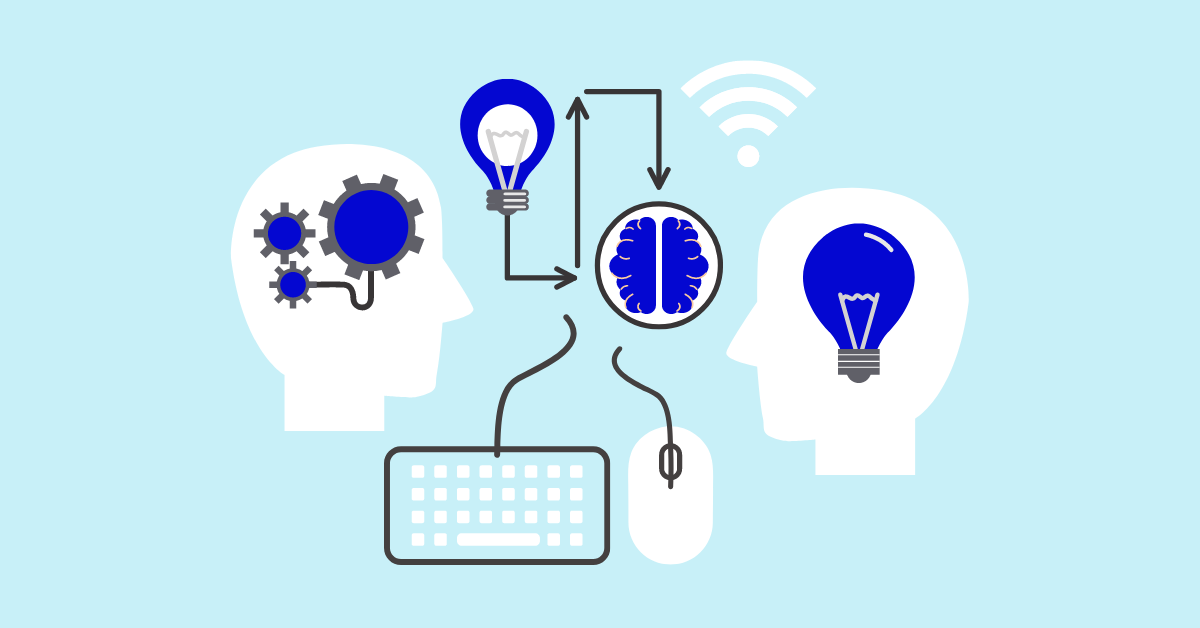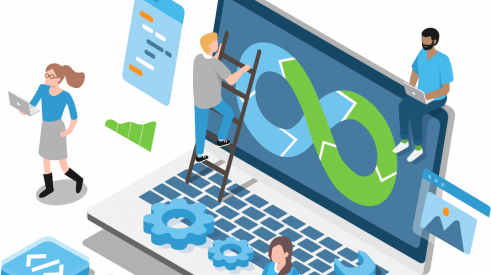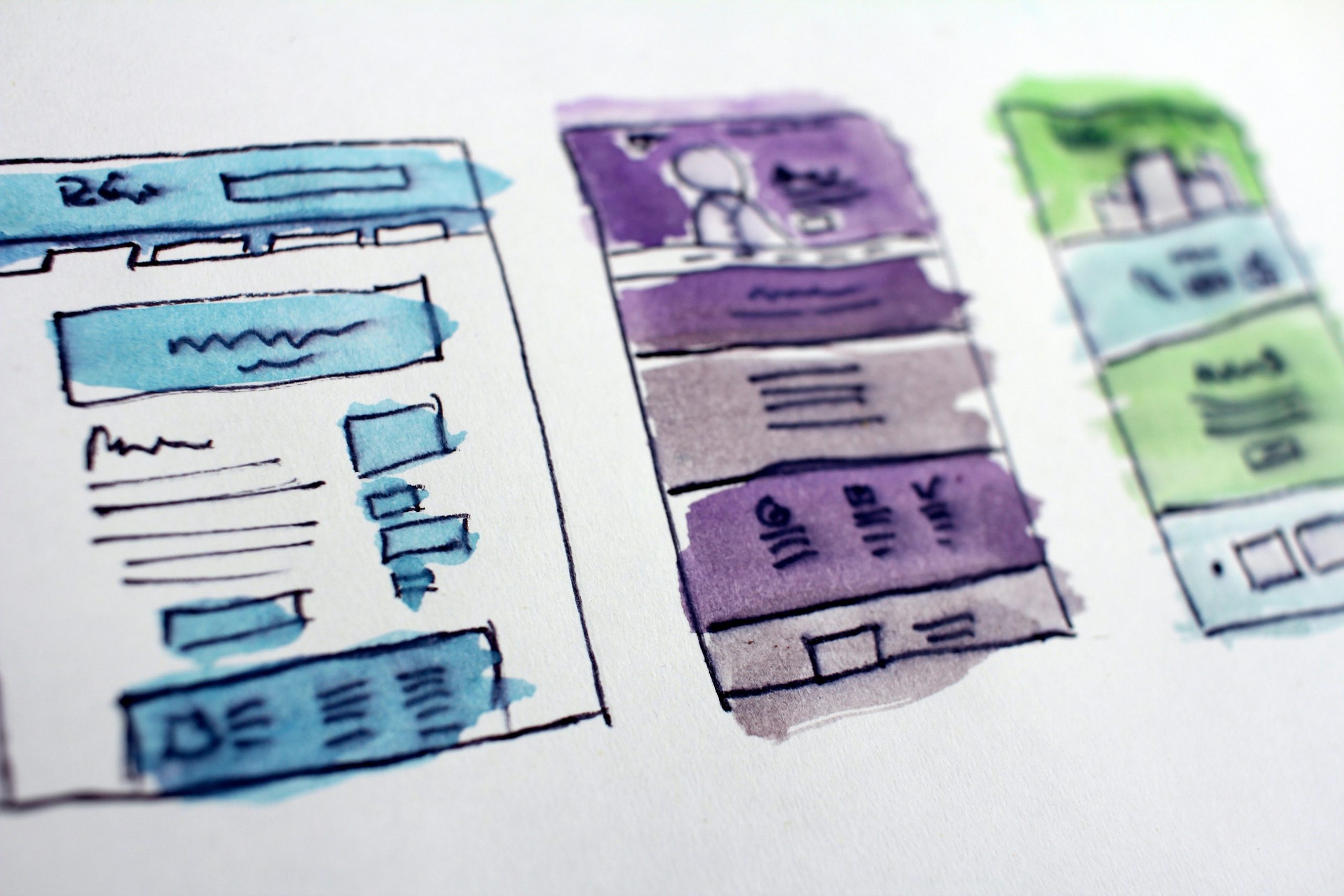In this article, we present the best practices for conducting Design Thinking workshops or a Design Sprint remotely. Indeed, the current context makes it possible to realize to what extent the integration of technology in business is one of the success factors. Whether to grow, stay relevant or ensure customer satisfaction, organizations have every interest in thinking about how to innovate. Innovation requires the transformation of work culture, but above all, through the integration of tools to work even better, more efficiently and more quickly.
Additionally, Design Thinking processes and Design Sprint methodology are some of the best ways to put it all into practice. Multidisciplinary, collaborative and creative approaches, they align and inspire teams to innovate to simplify their digital transformation. However, with the distance imposed by health measures, the conduct of the workshops resulting from these methods had to be rethought.
Discover our advice.
Brief reminder
Design Thinking, an empathetic practice
A true participatory process, Design Thinking is a practice bringing together empathy, creativity, co-creation, iteration and the right to make mistakes. It can be used both during complex reflections and during weekly meetings. Its goal is to organize the search for innovative user-centered solutions. Design Thinking workshops include, among other things, a series of creative and collaborative exercises so that a team can align on an objective and propose testable solutions to meet it. Collaborative intelligence thus makes it possible to develop new ways of thinking. In short, Design Thinking is a method of guiding innovation that promotes collaboration to focus efforts on user needs.
To find out more, discover our article which demystifies this practice.
The Design Sprint, an innovative methodology
The Design Sprint is a much more applied version of Design Thinking. This is an innovative methodology developed by Jake Knapp and the UX specialists at Google Ventures. Companies such as Google, Lego, Home Depot or AirBnb are already using this methodology to innovate their organization. During 3 to 5 days of workshops, facilitators support the organization in analyzing business issues and user needs. Subsequently, the workshops carried out during this sprint make it possible to prioritize projects and the emergence of innovative ideas.
« Design Sprint workshops allow our clients to engage their multidisciplinary teams to help them make good strategic decisions based on facts and not assumptions. This also allows our customers to resolve a problem that does not seem to have an obvious solution! » — Sara Nicole, facilitator at Libéo
Ingredients and recipe
« To fully understand, the Design Sprint uses Design Thinking tools. We can say that the two processes are “cousins” of each other, but they have differences. Design Sprint has a sequence of steps while Design Thinking is a tool that helps us execute these steps. Let’s think about making sushi. In this case, the Design Sprint would be the recipe and Design Thinking would be the ingredients to prepare it. » — Sara Nicole, facilitator at Libéo
The advantages of distance
The distance caused by the current situation brings its share of challenges, but can also be advantageous. Indeed, for teams usually dispersed in different cities, remote workshops allow them to collaborate to resolve problems quickly. The ability to collaborate over long distances is a plus! It also allows you to use a proven process that provides precise results without using additional budget for accommodation, travel, room rental or food, for example.
«It can be difficult to work with the ideal team due to busy schedules and sometimes different locations of team members. Some companies are lucky enough to have the budgets to fly their members to a single location. But all these problems disappear thanks to the possibility of carrying out Design Sprints and Design Thinking workshops remotely. » — Sara Nicole, facilitator at Libéo
To reap the benefits of distance, here are 10 of our best practices for conducting remote workshops.
Practice #1: Be well prepared.
Preparation work is particularly important in the case of a Design Thinking workshop or a remote Design Sprint. Poor organization can quickly waste a lot of time. Who will be part of the workshop? How long will they last? Where to settle? What documentation should be prepared? What tools will be used? Many things are to be expected. For example, it is important to become familiar with the new tools used to avoid technical problems on the day. You also need to arrive well prepared for the workshops.
« The number of possible unforeseen events is multiplied when you are at a distance, so you must try to compensate for this through good preparation. » — David Noreau, senior lead strategist at Libéo
Discover this guide to leave nothing to chance!
Practice #2: Set up properly.
The adequate installation for the smooth running of a Design Sprint or remote Design Thinking workshops should not be neglected. Here are a few tips.
An optimal connection
The key to a good installation is first and foremost the Internet connection. Be sure to test your connection beforehand whether you are a participant or facilitator. It is even strongly suggested to provide a mobile network if the Internet connection is ever interrupted. Most current 3G and 4G networks support video conferencing at acceptable levels.
A place conducive to creativity
The facility also includes where you will be during the workshops. It is best to be in a quiet, comfortable and well-lit room. Indeed, noise, echo and interruption from others can harm the creativity and concentration that workshops require. The light must also be designed to allow you to see yourself clearly on the screen. However, it must also offer you suitable lighting if you have to write down ideas or draw concepts.
Practice #3: Work with good tools.
Here are four essential tools to successfully run your workshops during a remote Design Sprint:
For videoconferencing
In order to bring your entire team together in one room, you will need a videoconference room. It’s not like being in the presence of these colleagues, but video still allows for fluid exchanges between teams. Several technologies exist for videoconferencing: Zoom, Teams, Whereby, etc.
For the whiteboard
In a Design Sprint, whiteboards are essential. They allow you to keep track of everything that happens during the workshop days. Luckily, there are whiteboards online! These boards even have an interesting advantage: they offer infinite space and a permanent record of the Design Sprint in progress.
Here are the pros and cons of Mural and Miro tools.
For team discussions
A team discussion tool can be very interesting for certain workshops. Indeed, video can sometimes be exhausting. Likewise, some exercises require a moment to think about them individually. To keep the team connected even during these non-videoconferencing times, an online chat tool is a must. Slack, Basecamp and Mattermost are examples of technologies for having online chat.
For user testing
There are different tools for recruiting participants or even conducting interviews. To successfully carry out remote user testing, more than the tools, it is important to establish a connection with the participant.
«For remote user testing, there is something positive, because the user is in the ideal testing environment: their own! When we do the tests in person, we always introduce a bias by providing the latest equipment in the company. There he uses what he would actually use to visit the site or application. Once the technological concerns have been removed, there is something reassuring for the participants in being in their home too. There is none of the stress of taking over a new place.» — David Noreau, senior lead strategist at Libéo
Discover all the advice from David, our chief strategist, in this video in French.
Practice #4: Facilitate with experts.
Facilitation expertise is essential. Indeed, the distance requires a very engaged animation due to the virtual presence. Participants can easily become silent behind their camera. Facilitators must be able to generate participation. It can be helpful to cycle through team members to ask their opinions and not rely on just one person too often. In addition, facilitation experts know how to create a rhythm in the workshops and a momentum for creativity while providing breaks at appropriate times. Finally, with practice, good facilitators know how to be aware and sensitive to the team at all times while never losing sight of the workshop objectives.
Little tip: Being two facilitators present during a Design Sprint can simplify the process in the event of technical problems or other remote problems.
Discover our article on the role of the facilitator.
Practice #5: Design good teams.
Building remote collaborative teams is important to ensure the right mix. Consider mixing the disciplines that will be present on the team to cover the business and get different points of view. Additionally, it is interesting to balance skill types and personalities. Some people are good at defining problems, others at analyzing or deconstructing ideas. Some people express themselves more while others will have a personality oriented towards listening. In short, it helps to have people with a mix of skills, professional experience and personalities.
Practice #6: Communicate directly.
Live video is essential to ensure good communication during remote workshops. Indeed, with video it is easy to spot if someone is disengaged or perplexed during a session. She ensures the direct communication link between the team and the facilitators by acting face-to-face. Distance takes away the unstructured social time usually found in the office. Thus, using video helps build better collaboration and team cohesion for workshops.
Little tip: It can be interesting for everyone to have two screens during the workshops. Thus, it is possible to simultaneously see teammates (on one screen) and the whiteboard or presentation (on the other).
Practice #7: Manage expectations.
Managing team expectations is crucial. Distance brings its share of challenges: slow connection, poor image, bad sound, difficulty sharing the screen, etc. In addition, everyone wants to have a good return on investment of the time spent in the workshops. To properly manage expectations, it is best for all team members to agree on the desired outcome from the start. The result can be a prototype, possible solutions, a timeline for prioritizing projects, etc. The goal of the workshops is not to have an entire product at the end, but to validate a vision and gain the trust of the team to move forward. Thus, taking stock at several points in the workshops allows us to validate that everyone is still on the same wavelength and working in the same direction.
Practice #8: Organize a schedule.
Be realistic when leading a Design Thinking workshop or Design Sprint. Schedule time for breaks to recollect and refocus everyone’s energy. Test the tools beforehand to avoid wasting time during the workshops. It is also important to precisely calculate the duration of each task you want to accomplish. Don’t be too optimistic when estimating this duration. Indeed, it is better to have more time because technical problems are frequent.
« At each workshop, we always have at least one small technical problem so we have to allow extra time to make everything functional. A good way to overcome the problem is to allow 10 minutes, 1 or 2 days before the workshop to test everyone’s workstations (and break the ice in the process!).» — David Noreau, senior lead strategist at Libéo
Practice #9: Have fun.
Many people miss the whole social aspect of work since the demands of confinement and social distancing. It is all the more important to try to find moments for your team to enjoy participating and collaborating in the workshops. Listening, trust and a shared vision contribute to creating a pleasant climate. In addition, it is proven that teams perform much better if they experience real motivation and pleasure in what they accomplish.
Practice #10: Evaluate workshop conduct.
It is a good initiative to collect feedback from the team in order to identify areas for improvement for future remote workshops. Indeed, feedback is an essential part of practicing Design Thinking and Remote Design Sprinting. The best time to do this is right after the end, because everything will still be fresh in your memory. For example, if you have had several technical issues due to distance, it may be a good idea to discuss why they occurred and how to prevent them from happening again.
Quick tip: Before your workshops, prepare a short anonymous online survey and send the link to participants immediately after completion. Suggest that the team also leave comments to get advice for future sessions.
At Libéo, we apply the principles of Design Thinking to help you implement digital strategies that simplify your digital transformation. Because we believe that a problem leads to an opportunity, we have set up an online system allowing the realization of quality co-creation workshops despite confinement and compulsory distancing. Since the start of this crisis, we have even carried out more than fifteen workshops, including several with individuals from all over the world. If you are interested in participating in all this co-creation from the comfort of your home or office, contact us.




